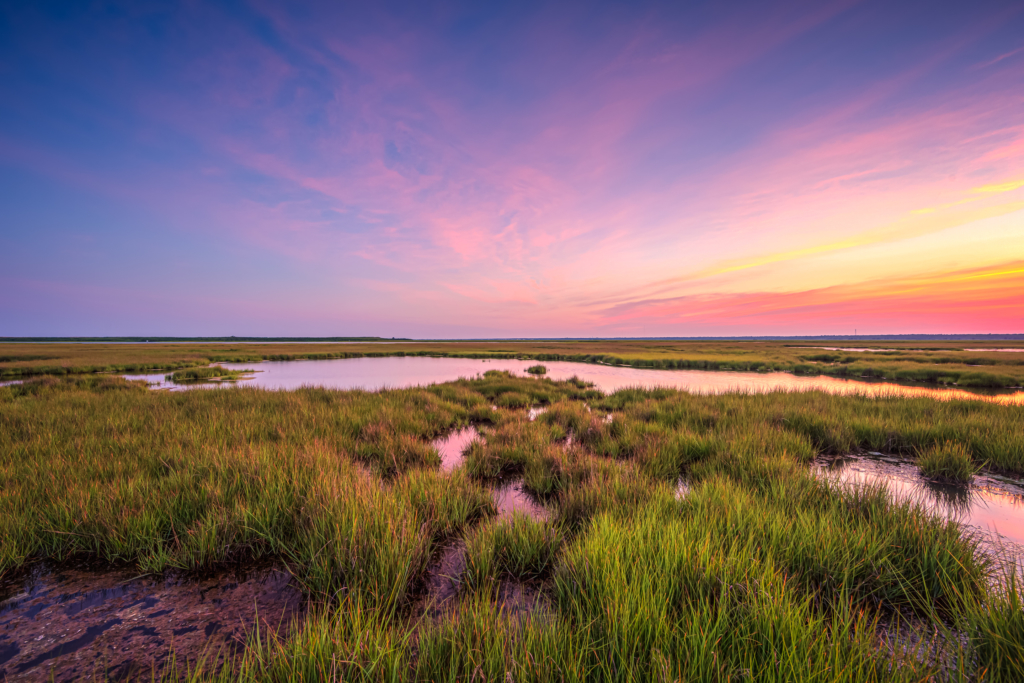
You can visit the same place over and over for years, photograph it hundreds of times, and to quote the great Yogi Berra, “you can observe a lot by watching.” Which is to see one of my assumptions about the Cedar Run Dock Road salt marsh may be false. For years I operated, with certainty, the notion that come late June/early July the marsh grass would take on a special kind of green. A solid sea of newborn springtime green, uniform and lush. The marsh grass would grow long and the color it cast had such a lively glow that if you stared hard enough you’d think it breathing.
Much of this notion stems from a single, formative photograph I made back in 2013. It was a pair of photographs, actually, yet I have but one posted here. South-facing, a summertime sun shower that to this day still holds a spot in my nine photo portfolio. Suggesting in and of itself I may be holding on to something too tight. This photo shows the marsh in all its green glory. From that point on, as the calendar flipped to June, I would hype on the great green return. Except it has turned more into the great green reckoning. Instead of a green shag carpet the marsh has taken on yellows and reds worked in among the green. I have also observed the grass has not grown quite as tall. Interesting.
So what gives? Were I of a proper scientific mind it would be time to lay down a hypothesis, prepare an experiment, and record results. My observation, however late, as shown my years long hypothesis about greening to be wrong. Is there a way to demonstrate experimentally why? Can said experiment then be independently repeated by others and at other salt marshes? Of course I lack the skill and intellect to make any of this happen, but I will, as any laughable armchair scientist would, spitball the possibilities. I mean anti-intellectualism is en vogue no anyway, am I right?
So here goes. Years of evidence suggests lush green is the exception and not the norm, at least over the past five years. Whatever happened prior is out of reach. So what happened back in the halcyon days of June 2013? I have a couple thoughts. One possibility is the presence of more fresh water in the salt marsh ecosystem. If not freshwater, then some kind of difference in the water table to facilitate lush growth and coloration. The second condition may have wholly been a factor of lighting. I made South-facing in late afternoon as a thunderstorm was pushing in over the marsh from west to east. Set against the darkened, rain filled clouds was a potent dose of golden sunlight. It is possible this let play affected the color of the grasses. I find this latter possibility more dubious, but for right now these two theories are all I have got. If any folks out there in the know what is actually up I would love you to take me to school.
I will end this saunter through my mind’s eye with a quote by Sir Arthur Conan Doyle, “you see, but you do not observe.”
Update [30 June 2019]: My smart and astute friend Staci dropped this clever insight on Facebook: “Hurricane Sandy, fall 2012. I posit that perhaps all of the detritus and chaos from that storm, toxic to the ecosystem or otherwise, could’ve had an impact.” This makes a lot of sense. Thanks, Staci.
Interested in buying? Purchase
